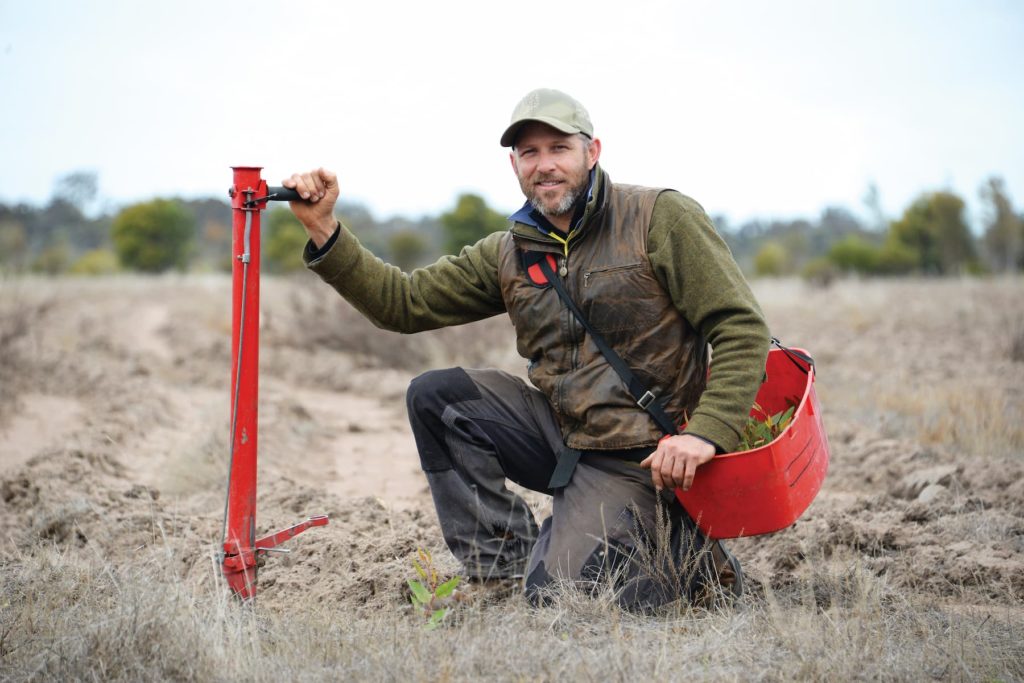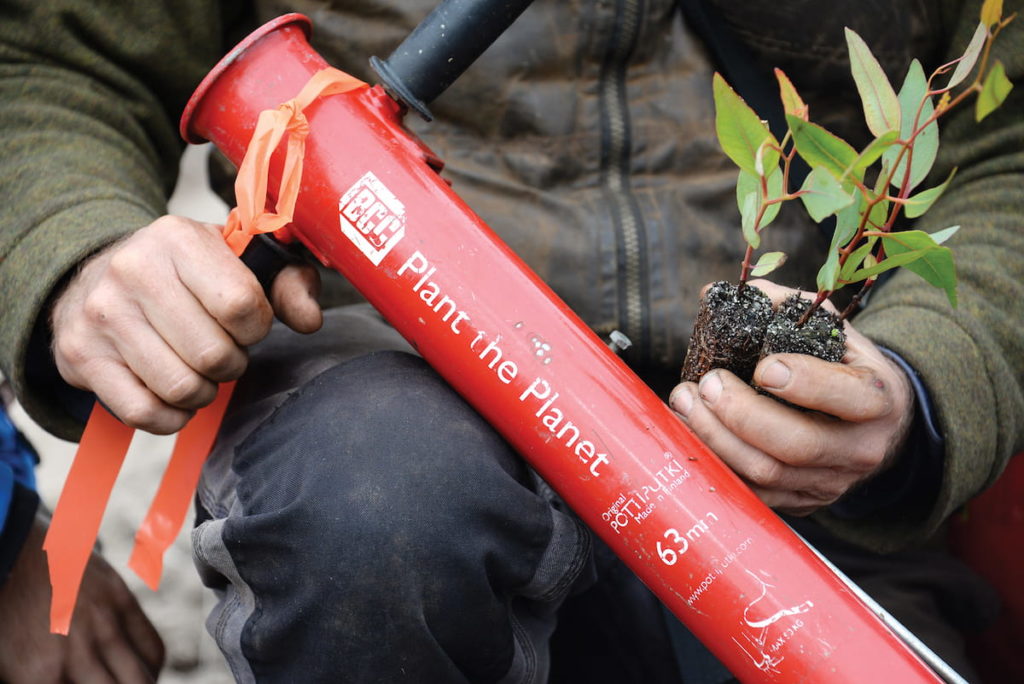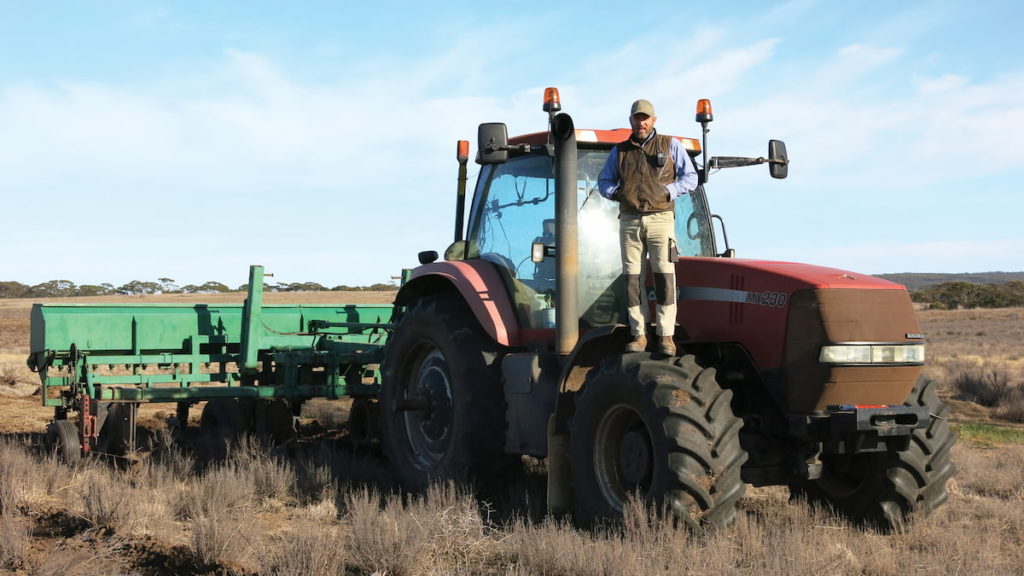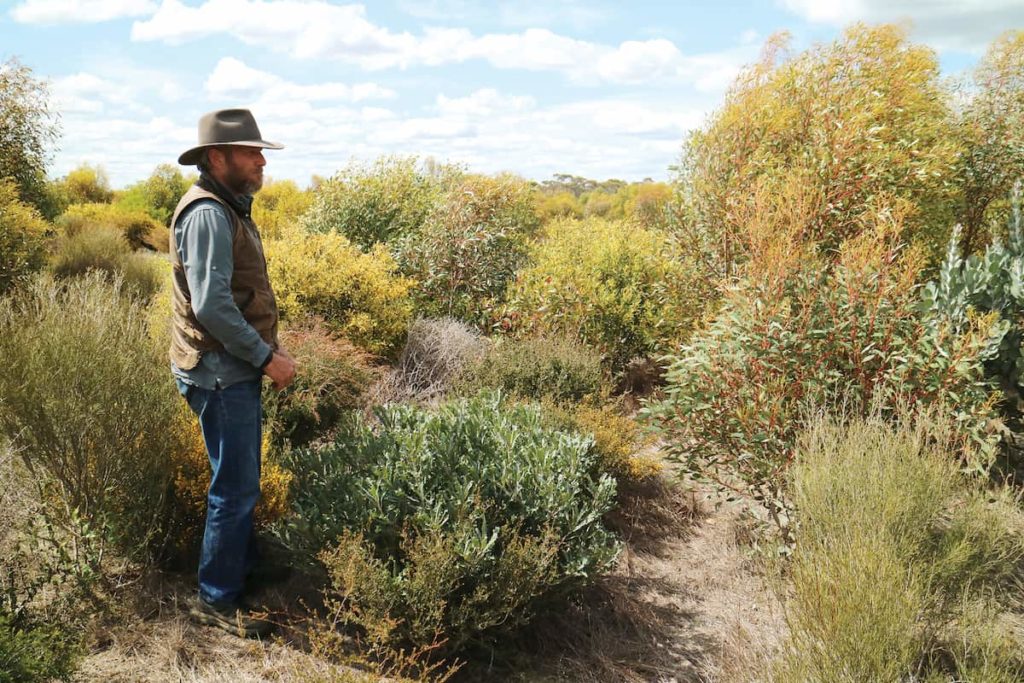Restoration ecologist is a man with a mission
Originally published in the Southerly Magazine, July 2021
TASH KNEEBONE charts the state of the Great Southern’s environment and goes one-and-one with local restoration ecologist Justin Jonson.
THE South West of WA has an incredibly rich and diverse array of life forms and ecosystems that include jarrah-karri forest, Esperance mallee, Kwongan heathlands, saline wetlands, granite outcrops and the Tingle forest in Walpole, to name a few.
This area is one of the world’s 34 biodiversity hotspots and one of 15 within Australia.
Biodiversity refers to the variety of different life forms within a given region. A hotspot describes a region containing high numbers of distinct and endemic species that face significant impending threats, and has experienced the loss of more than 70 per cent of the original natural vegetation.
Threats to biodiversity in the South West area – encompassing Albany and surrounds – include deforestation, bush fire, wetland degradation and reclamation, salinity, invasive species, and climate change.
Australia has the unenviable reputation as a world leader in mammal population decline and wildlife extinctions coupled with a very poor record of protecting its unique wildlife.
Australia, and the south-west corner of WA in particular, has suffered significant habitat loss due to deforestation.
Since colonisation, 100 of Australia’s unique flora and fauna have been wiped off the planet and at least 30 mammal species have become extinct, which is near the same number as the rest of the world combined.
More than 1,700 species and ecosystems are threatened or endangered.
Australia has continued high rates of land clearing, ranking among the fastest among more developed countries. Land clearing and degradation are the primary causes of habitat destruction, biodiversity loss, salinity, soil depletion and climate change.
Past and present land clearing in the South West has left remnant pockets of bush. Fauna and flora in these pockets are genetically isolated, which decreases the resilience of these species and hastens their demise.
Further, these isolated pockets of bush leave fauna vulnerable to predation as they move between pockets for food and shelter.
Arguably, the current fire management regime of prescribed burning, particularly in the South West, is also having detrimental and irreversible impacts on habitat and biodiversity loss. A peat swamp in the Walpole Wilderness was a recent and notable victim.
Climate change modelling and projected data forecast increasing temperatures and reduced rainfall for the South West, Albany, and surrounds. Increased temperatures and reduced rainfall will have significant impacts on local fauna and flora that include increased susceptibility of flora species such as Eucalyptus and Banksia to dieback and other disease.
Reduced rainfall will have dire consequences and impacts on stream flow, wetland ecosystems and forest health, and the tingle forests, such as that at Valley of the Giants near Walpole, are unlikely to survive.
These giant eucalypts are found nowhere else on Earth and some have been standing for 400 years and provide an abundance of food sources for native animals.
Unlike other eucalypts, red tingles do not have a taproot. They have a shallow root system and therefore rely on surface humus for water. This renders tingles particularly vulnerable to a drying climate.
The decline of South West fauna and flora is predominantly due to land clearing and anthropogenic climate change. This will inevitably have dire implications for ecosystem services that affect us directly, such as our food, water and energy security.
Examples of our threatened fauna include:
* The Australasian Bittern (Botaurus poiciloptilus), known to South West Indigenous people as boordenitj, is an endangered heron with a 50 % decline in population since 1980. Bittern declines in WA are predominantly due to wetland destruction and degradation;
* The Western Ground Parrot (Pezoporus flaviventris) or (kyloring – Noongar name) is endemic to the south-west corner of Western Australia and is one of the world’s rarest birds with a reported approximate 150 individuals remaining east of Albany and a population in Cape Arid National Park. The Western Ground Parrot has been listed as critically endangered by the Australian Government. Significant threats include introduced predators, feral cats, wildfire, climate change and the impacts of dieback on food sources;
* The Noisy Scrub-bird (Atrichornis clamosus), known to Indigenous people in the South West as Jeemuluk, is an elusive endangered species, with a small population located in and around Two Peoples Bay. A number of the small population have been translocated to similar habitats around Albany as part of a recovery program. They have limited flying ability so they are vulnerable to predation from introduced species and fire.
* There are an estimated 30 known remaining populations of the Sunset Frog (Spicospina flammocaerulea), which is endemic to the South West. This rare species survives in tiny pockets of peat swamps near Walpole and Nornalup. Climate change, habitat destruction and fire have played a significant role in their demise.
* Australia’s most critically endangered marsupial mammal, with fewer than 100 remaining in the wild, is the Gilberts Potoroo (Potorous gilbertii). A small remnant population survives in the Two Peoples Bay area, which remains vulnerable to predation by feral cats, foxes and fire.
These represent just a small sample of the fauna, flora and ecosystems that are almost lost to us forever, and their future remains doubtful.
While the prognosis is gloomy, there is hope in the form of local heroes, volunteers, scientists and citizen scientists who champion, advocate for and support these species, local environments and ecosystems.
Some examples include the Denmark Bird Group, BirdLife Western Australia, Gilberts Potoroo Action Group, local government agencies and Gondwana Link.
Gondwana Link is a restoration, recovery and protection program described as “one thousand kilometres of hope”. It was established in 2002 as a landscape connectivity project to create wildlife corridors connecting forests of the South West from Augusta to the Great Southern Woodlands, which are approximately 1,000km to the east.
Gondwana Link projects include Nowanup restoration, Nullaki feral animal control and fauna monitoring, fencing within the Oyster Harbour Catchment, large-scale restoration at Peniup, wetland restoration and programs to support the hooded plover. An estimated 15,000 hectares have been restored since inception of the program.
Justin Jonson is one of these environmental heroes. He is involved in restoration projects that promote connectivity between bush islands, fostering biodiversity conservation and operating as carbon sinks.

A priority for Justin is not just to plant trees but to “put the right species in the right place and in the right combinations”.
To date, he and his team have planted over 7 million trees and shrubs in the process of restoring more than 1,500 hectares of cleared land in the Fitz-Stirling region of the Gondwana Link initiative.
Some of the restoration projects implemented by Justin’s business, Threshold Environmental, are Monjebup Reserve (2012, 2013) and Yarrahweyah Falls (2013).
The restoration of these areas provide many ecological benefits, such as rebuilding soil, carbon storage, desalinisation of rising water tables and provision of habitat which serve as wildlife corridors.
~ ~ ~
TK: What do you do? How would you describe your job?
JJ: I work as a Restoration Ecologist. At the most basic level, this work is about returning native plants (trees and bushes) to land that has been cleared or degraded. Importantly though, the work is also about getting the right species in the right places/soil-types, and in the right combinations. Those decisions are informed by the soils on site, and the native plant communities observed around each site. Once plans are developed, my role is also to ensure the in-field delivery of each project meets the objectives of the work. This entails marking out soil changes with pin flags, organising seed mixes, coordinating tree planters, and operating tractors to direct seed the project areas. Working with a diverse mix of different stakeholders, community members and professional contractors, I serve as a point of contact for action on the ground.
TK: What is your area of expertise?
JJ: To be an effective practitioner of ecological restoration, a wide range of different areas of expertise are required. There is the scientific component, which includes research, collection and evaluation of field data, and synthesis of the results. That process includes the evaluation and observation of both soil and plant biology. Then there is the bigger picture – the connections – observing and recording the ecology of the vegetation and its effect on local animals. Much of this work is also collected with hand-held GPS devices and uploaded to computer mapping software to provide a spatial reference across the landscape. Seed mixes and field data are recorded, organised and evaluated on Excel spreadsheets. Ground operations require a wide mix of skills from operating machinery to managing weeds and/or direct seeding of natives. All the while, being proficient in business, liaising with clients and key stakeholders, and managing budgets to deliver outcomes on time, effectively and efficiently.

TK: How did you enter this field? What is your background?
JJ: Growing up in the US and abroad, I had good exposure to natural and wild environments, from which I developed an affinity for the natural world. At the University of Virginia, I studied Biology and then later pursued a Masters Degree in Natural Resource Management at UWA. Philosophically, I believe humanity can do better with how it interacts with the natural environment. I chose the field of Ecological Restoration as a means of right livelihood, with the goal of earning a living by restoring the natural world.
TK: What are your goals /aims for the next five years?
JJ: Over the next five years I’d like to work with my colleagues in the region to plant 10 to 20 million trees and shrubs on marginal cleared land. I’d like the areas planted to have the right floristic characteristics to become well-functioning ecosystems, supporting local animals, insects and other nutrient cycling organisms. Ideally, those plantings will buffer areas of large intact remnant vegetation, or provide corridors and/or ‘stepping stones’ to support the expansion of habitat while conserving the region’s biodiversity.
TK: What does a day/week look like for you?
JJ: My daily/weekly schedule changes quite substantially throughout the year. Generally, there is a 60/40 mix between desktop work and fieldwork. However, this can change if there is seed to collect, or some other seasonal task to deliver. Planting season is roughly from June to September, aligned with the Mediterranean winter. During this time, I like to be up and out before sunrise, and often finish well after sunset. Planting involves direct seeding of native species using agricultural machinery, coordinating teams to hand plant seedlings, and I do a good deal of hand planting as well. Given the high number of different soil types and land formations, the plantings would not be successful without detailed planning. That work happens throughout the year and includes soil sampling, vegetation surveys, site mapping and the development of spreadsheets detailing species mixes and seeding rates. Ongoing liaison with seed collection contractors and seedling-growing nurseries is also required to get the right plant species ready for each site. When not undertaking site planning, or getting trees in the ground, the rest of the year is taken up with a good deal of desktop work which includes ongoing correspondence with key stakeholders including project funders, landholders, contractors, community leaders and NRM professionals, as well as reporting and development of project proposals. Part of the year is also dedicated to setting up monitoring plots to review and track the success of planting projects. Whether in the office or in the field, there are full scheduled activities across the year that flow from one task to the next and keep me very busy.

TK: Why do you do it?
JJ: I guess a big question for all people is “Why do we do what we do?” The short answer is because someone needs to do it, and it might as well be me! I must admit there have been times when I have asked myself why I chose such a physically demanding and challenging field for a profession. I also enjoy making pizzas and drinking boutique beers, so I would enjoy running a pizza bar as well…
But at the end of the day, I think the world needs more of this work done, and I’m able to do it.
TK: Any lowlights and highlights?
JJ: A spiritual elder once said, “The way of the warrior is to know that your actions are futile, but to continue as if you did not know it.” I think that is a great mantra for those working in the environmental sector at the moment. Globally, the world’s natural systems are in trouble, and the current trajectory is not especially good. The scale of human dominance over the earth’s natural systems is vast. This can weigh heavily on the mind and make one feel like the mountain is too big to climb, especially after a long day in the field. I actually shed a tear or two after finishing a 100 hectare planting project at Monjebup North – one of our best works – as it felt like a drop in the ocean on a global scale. However, returning to that site five years later, and seeing and hearing all the birds flying around, the goannas crossing the tracks, mallee fowls nesting, and insects buzzing everywhere, it definitely makes it all worth it.
TK: Future hopes?
JJ: Continuing to build a world- class team of restoration professionals to blaze a trail of best practice in the emerging Restoration Economy. What is the Restoration Economy? It is a new sector that is growing from people’s awareness that global economies are built off the back of the natural environment, and we’ve been steadily degrading it since the Industrial Revolution. For example, over the last ten years, 10 million hectares of the Earth’s forests have been cleared every year by people. Now, healthy environments are becoming more rare, and a financially underpinned consensus to restore them is emerging. My hope is that economies around the globe will continue to transition toward production systems and jobs that are both profitable and sustainable.

TK: Is there a motto or code of ethics you live by in relation to your work?
JJ: Go hard. Attention to detail. No shortcuts. 110% effort. Sensitive dependence on initial conditions, which means getting it right from the start.
TK: What legacy would you like to leave?
JJ: More trees. More biodiversity. More happy birds. Ecological health. Restored environment. Detailed, sophisticated designs for restoring ecosystems.
~ ~ ~
Justin is making a significant and admirable contribution to the mitigation of biodiversity loss and climate change with his work. He is indeed an environmental hero! You too can be an environmental hero. All contributions can make a difference, however small. Tackling climate change, biodiversity loss or making a difference with any other issue isn’t just for the scientists with a degree.
One way that we can all get involved in championing the amazing South West environment is through citizen science, which is the collection and analysis of data by members of the general public, typically as part of a collaborative project with professional scientists.
There are options for all interest levels. The website of the Great Southern Science Council has a list of citizen science projects you can participate in, ranging from using the Frog ID app, to unusual fish sightings along our coast, or Birdlife Australia’s Aussie Backyard Bird Count.
You can also join your local ‘Friends of’ group, advocate through political lobbying, or enthuse to your friends about our amazing environment.
There is a deep discomfort to acknowledging that future generations will experience a very different world to ours, but only by accepting that discomfort can we hope to make changes for the better.
